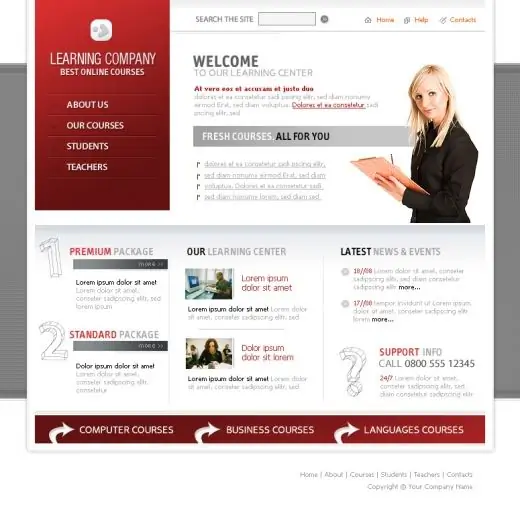- Author Lauren Nevill [email protected].
- Public 2023-12-16 18:48.
- Last modified 2025-01-23 15:15.
How well the website is designed depends on its performance, aesthetic appeal, functionality and convenience for visitors. Layout is one of the most important aspects of website development, and in order to avoid conflicts between layout and site design, the developer must take into account certain rules and standards common to all Internet pages.

Instructions
Step 1
It is not necessary to make the layout too complicated - the page layout should correspond to the maximum with the way the designer presents the layout of the future site. An overly complex layout can lead to the fact that the original design ideas will not be implemented on the site pages.
Step 2
When coding a template, it is important to remember that site navigation should be intuitive and convenient for every visitor. Each page should correspond to its section - it should have headings, menus, highlighted buttons that help visitors determine which part of the site they are in at the moment. Do not forget also about the thematic focus of the site that you are coding - fill the layout with content that matches the theme of the site and does not deviate from it.
Step 3
All pages in the layout must be linked to each other - the site visitor must be able to go to the site's home page from any of its pages at any time, which means that the layout designer must think over a competent system for placing pages and hyperlinks between them.
Step 4
Layout site template, make sure that the site pages will open correctly in most modern browsers, including Internet Explorer. Also, the correctness of the display of the site on the network depends on whether the site has the same encoding in all of its sections. You should not include several different encodings in the site - this will lead to incorrect display of the page on the network.
Step 5
All site pages must have meta tags and title tags. Use HTML tags wisely - do not overload the site with unnecessary tags, use them only for their intended purpose. Tags that are not needed should be removed. When setting tags on the site, make sure that the content of the tag matches its name. For example, the header tag should contain the title of the page, and the logo tag should contain the logo.






